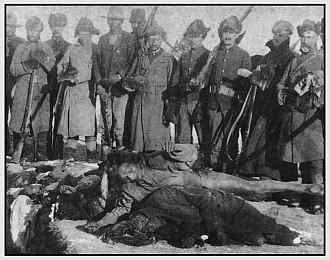By Linda Shaw
With the 1974 Boldt decision, which reaffirmed tribal fishing rights in Washington, "people were saying things like, 'Why do these Indians have special rights?' " Hurtado said. "If they really understood the history and the truth, they would understand that we've always had these rights."
Right now, most Washington students learn little about Native Americans, and even less about tribes in Washington state, where there are 29 federally recognized tribes--more than all but a handful of other states.
Textbooks don't help much--the one Kingston Middle School uses for state history ends its discussion of Native Americans around 1877.
Even in Kingston, where students live within minutes of reservations belonging to the Suquamish and Port Gamble S'Klallam tribes, many know little more than their names.
Many teachers shy away from teaching more because good materials have been hard to find, and they fear getting it wrong.
"It's truly just out of not knowing," said Gayle Pauley, of the state education department. "I used to teach third grade ... and there were so few authentic resources, it always bothered me."
Several points here:
This puts the lie to the claim that everyone should take "American history," not ethnic studies. When textbooks omit a century-plus of tribal history, that's whitewashing.
This isn't rocket science, people. I probably could go to a Native library and put together an acceptable set of resources in a day or so. Ignorance of what's available isn't much of an excuse.
Until 1974, courts denied local tribes their treaty-bound rights because of this kind of thinking. So stereotypes helped keep the Indians in poverty, unable to support themselves through fishing. Stereotypical thinking--i.e., ignorance--determined how whites would treat them.
So a lack of education is the problem and education is the cure. That's why education contributes mightily to the elimination of social ills. In the old "give people a fish or teach them to fish" maxim, teaching is usually the best solution.
For more on the subject, see Ethnic History Corrects American History and Mainstream History = Pro-White Propaganda.
Below: Some history conveniently omitted from Washington state's textbooks?


No comments:
Post a Comment